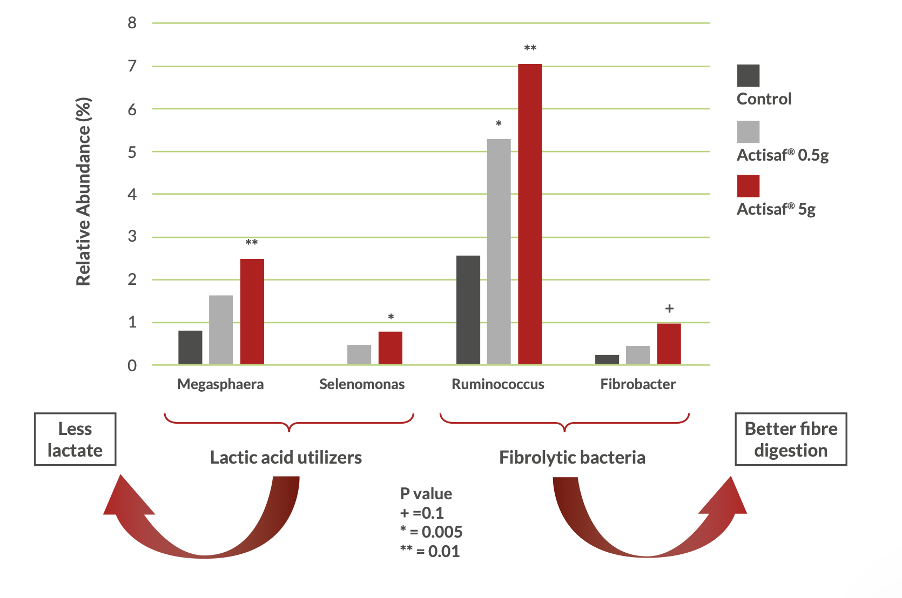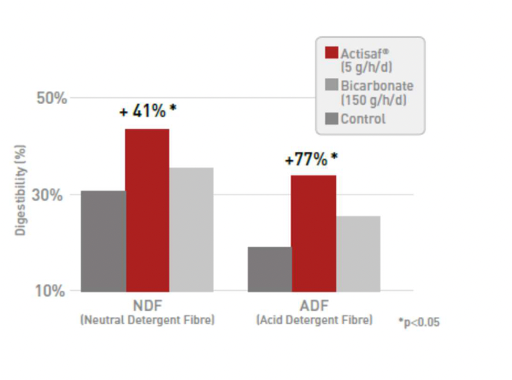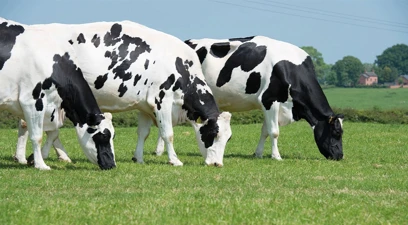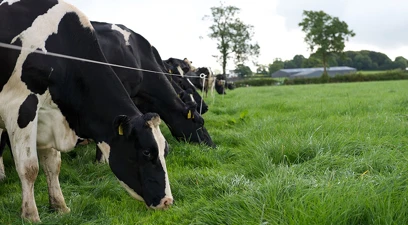The role of microbes in fibre digestibility
Published: 09 July 2024
As the year progresses and grass matures, palatability and digestibility reduce, meaning intakes and milk yield can drop off. Kevin Doyle of Phileo UK & Ireland discusses the role of rumen microbes and how managing the rumen can help improve fibre utilisation.
The past 12 months have brought their fair share of challenges on farm throughout the UK, including a slow start to the spring and delayed turnout for so many. It is little surprise to hear that recent analysis from AHDB shows that May milk deliveries are the lowest they have been in eight years.
A particular challenge now will be keeping on top of grass quality as grass naturally enters its reproductive phase and puts out a seed head, making it less palatable and digestible for the cow. With resulting reduction in intakes and energy provision, ensuring adequate nutrition will be essential to flatten the milk curve and minimise a drop in yield post-peak production.
Kevin explains, “At this time of year grass becomes more fibrous, and in turn is more difficult for rumen microbes to digest which can lead to reduced feed efficiency, milk yield and quality.
Role of fibre in nutrition
Fibre is an essential nutrient for cows as it aids rumen function, supplies energy and is a key component of butterfat synthesis. Fibre consists of plant matter that is both highly digestible (cellulose and hemi cellulose) and more difficult to digest (lignin).
“When it comes to fibre for lactating cows, balance is key, as too much NDF can result in a drop in dry matter intakes and too little can lead to acidosis,” Kevin continues. “Diets should ideally contain 32-35% NDF, with around 75% of this coming from forage like grazing and/or silage.
Microbes
The reason that dairy cattle and other ruminants are able to digest fibre is because of the microbes that reside in their rumen. An often-unappreciated benefit of ruminants to society is this ability to turn feed that is indigestible to humans into highly bioavailable meat and milk. But in order to fully access the energy these materials hold, the rumen microbiome must function optimally.
“The rumen contains trillions of microbes, including thousands of species of bacteria, protozoa and fungi. Specific species, like Fibrobacter succinogens are specialised in digesting fibre and are consistently found in the rumen of the most feed efficient dairy cows.
“Research has shown that up to 60% of variability in feed efficiency comes down to the rumen microbiome. This difference can be up to 2.5kg less DMI required for more feed efficient cows, which equates to around 8-10kg FW of a typical grass silage. That improvement saves 1 tonne fresh weight of silage per day in a herd of 100 cows with no loss in yield.
“The ability of the rumen microbes to digest fibre is highly influential on feed efficiency – the more effectively these ‘bugs’ can do their jobs, the more nutrition and energy the cow can extract from the diet and, consequently, the more milk she can produce."
Feed the rumen, feed the cow
It can be helpful to remember that when you feed the cow, you are actually feeding the microbes in her rumen. The balance of this community, called the microbiome, is important to rumen function but can be delicate.
“Consistency is key to managing the rumen and feed efficiency,” says Kevin. “In a perfect world, we would control all of the variables but, as farmers know well, the real world isn’t that simple so we just focus on what we can control.”
“First and foremost, you can’t manage what you don’t measure – analyse grass and silage regularly so concentrates and additives can effectively complement what cows are getting through forages. Many feed companies regularly analyse grass quality at a regional level which can be beneficial in getting a handle on this in your local area.
“Enlisting a dairy nutritionist to help you balance current grass quality will pay dividends long term by improving yields and feed efficiency. For example, higher NDF grass is generally lower in protein, so adding a higher protein compound to the diet can help compensate. Similarly, your herd could require a higher starch level in the compound to help with fibre digestion.”
Other practical tips for farmers looking to improve feed efficiency this summer include:
- Plan ahead and make changes in diet gradually, over 2-3 weeks if possible.
- Ensure clean source of water is available at all times.
- Manage heat stress carefully – high humidity in UK means that temperatures as low as 15°C can have a negative impact on yields, with cows selectively avoiding fibre in the diet to lower their internal heat load which can lead to an increased acidosis risk.
Adding a live yeast like Actisaf® Sc 47 probiotic to your herd’s ration or cake in the parlour can act as a bit of insurance for rumen function when challenges inevitably occur. But be aware that not all live yeasts are the same – differences in strain, stability and dose rate impact effectiveness.
By stabilising the rumen environment, Actisaf® supports the growth of key microbes that digest fibre and utilise lactic acid – this means improved feed efficiency and a lower risk of acidosis. This dual mode of action means better productivity, profitability and, depending on supplementation, a 5% reduction in CO2e/kg energy corrected milk.

In a recent study at the University of Nottingham, cows that were fed 10g/d Actisaf® had more than 6% better NDF digestibility and 5% increase in overall feed efficiency with no negative impact on body condition, health parameters or fertility.

Regardless of the season and what else is happening on farm, ensuring good rumen function makes the most of every bite of feed and forage. Not only does this means better cow performance and welfare, but farmers will also see benefits to sustainability measures (including carbon emissions) and their bottom line!
Related Tech Info

Rising prices of feed, fertiliser and energy keep putting pressure on the dairy sector, with production costs at farm level r...

A focus on management and nutrition during the 3 weeks pre- and post-calving makes all the difference to performance in the n...

Many dairy herds throughout the UK are returning to the grazing platform, taking advantage of such an excellent, cost-effecti...
